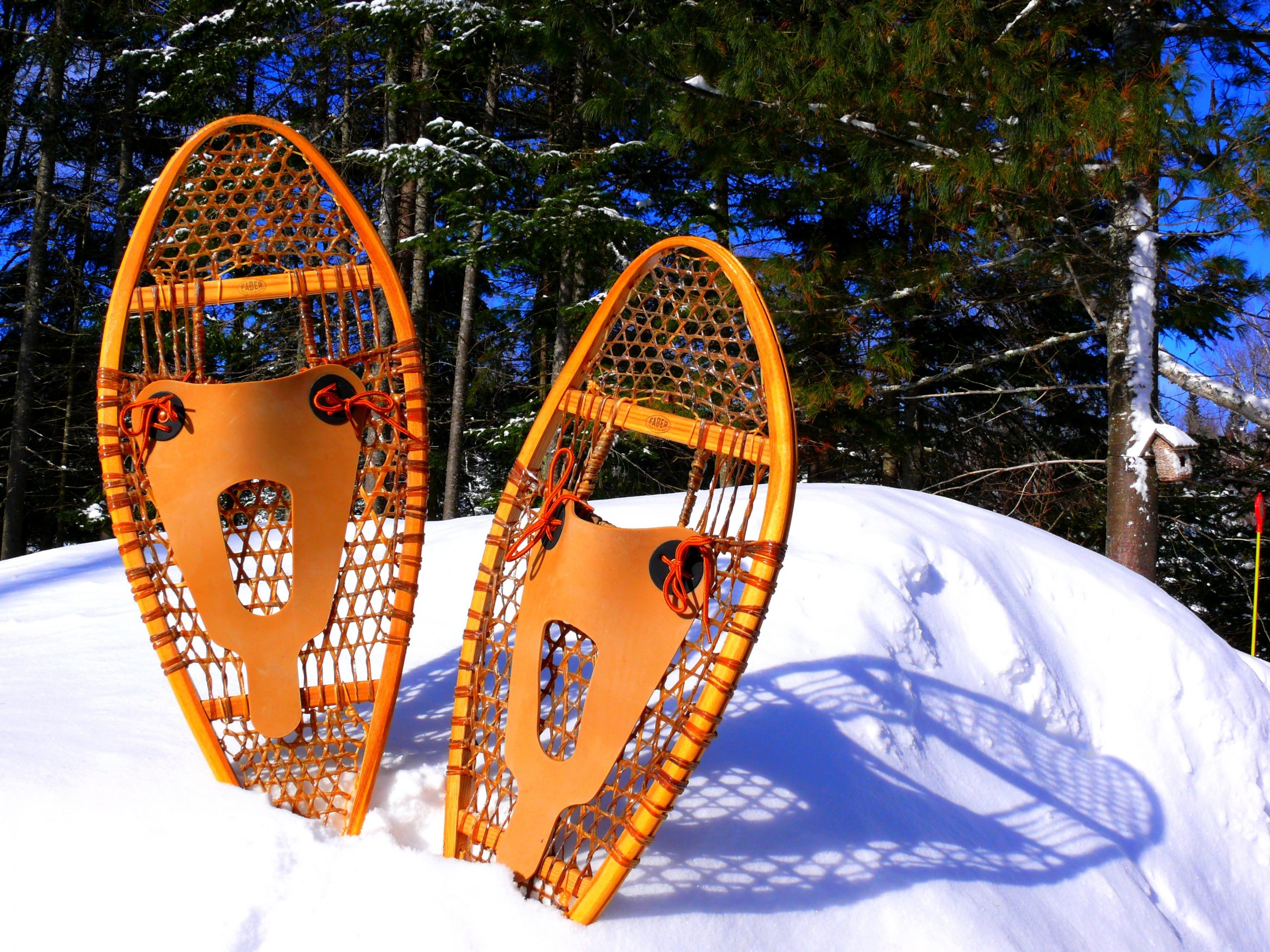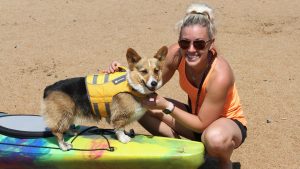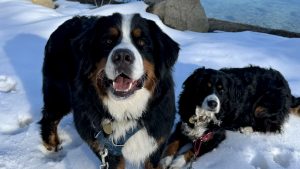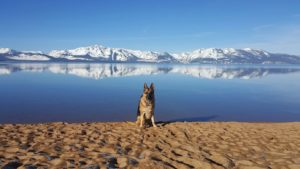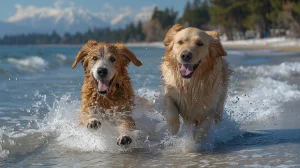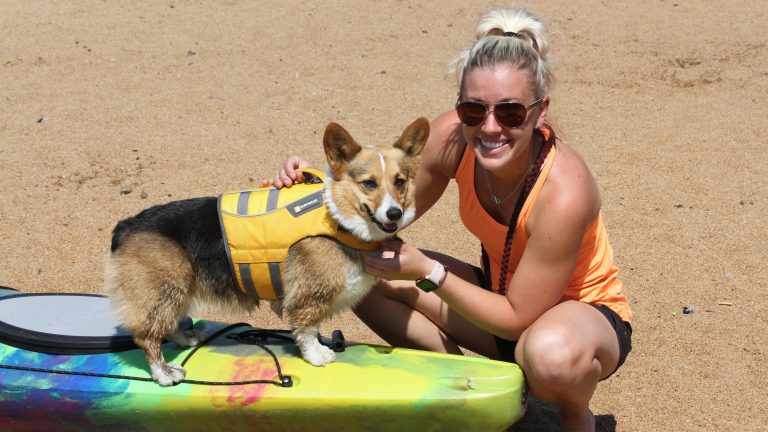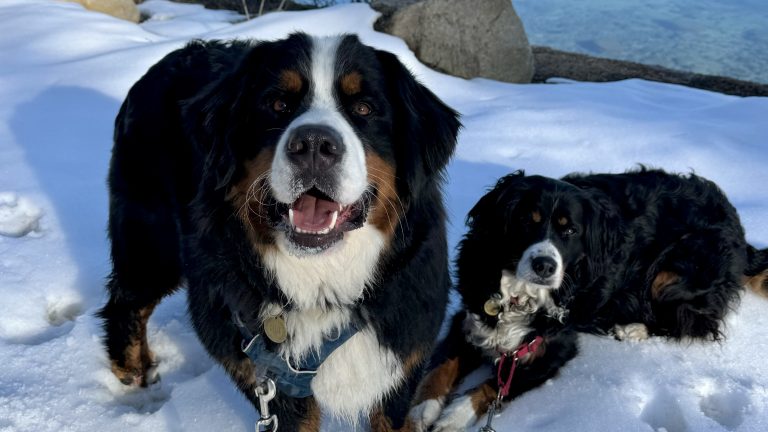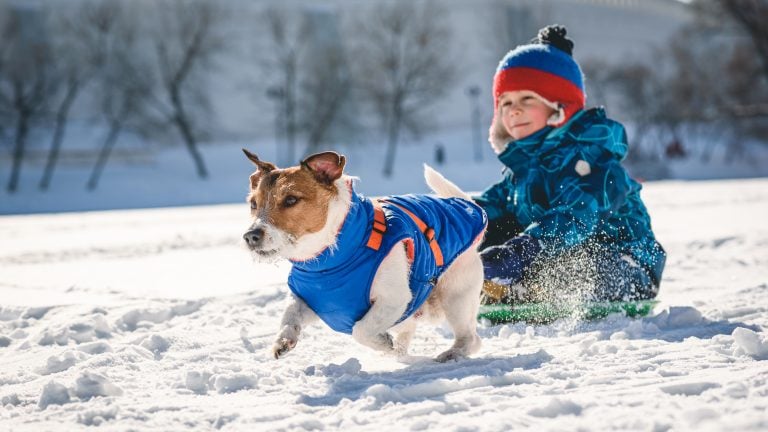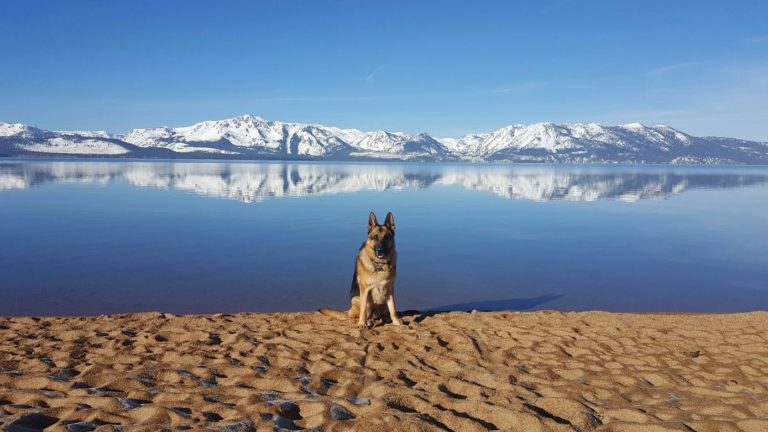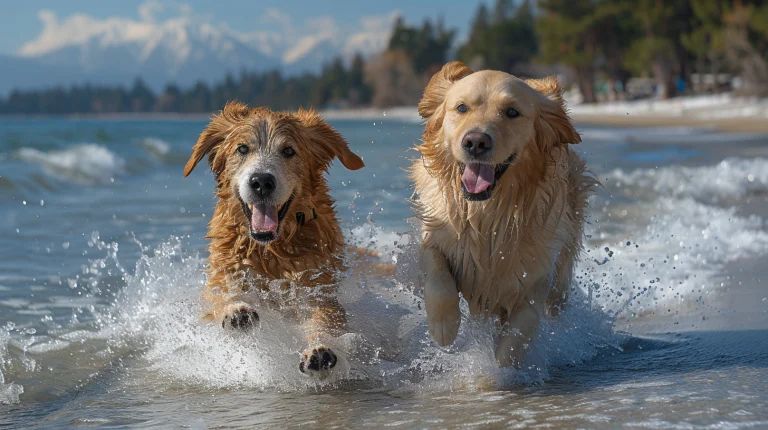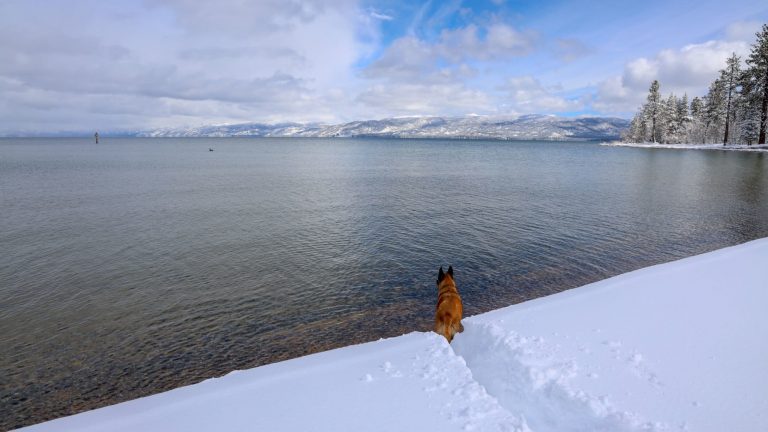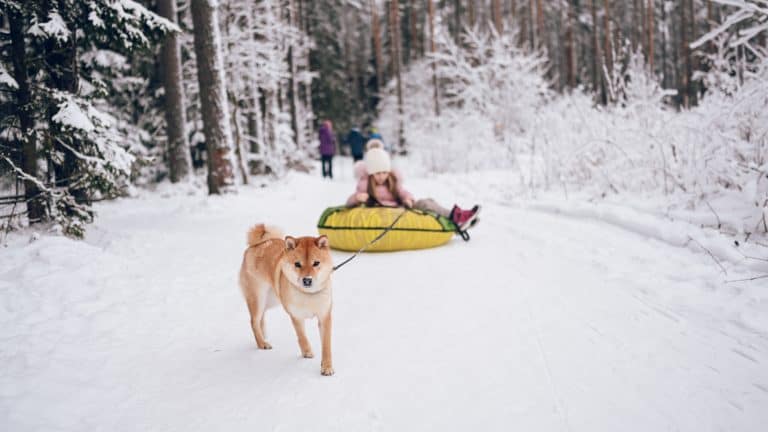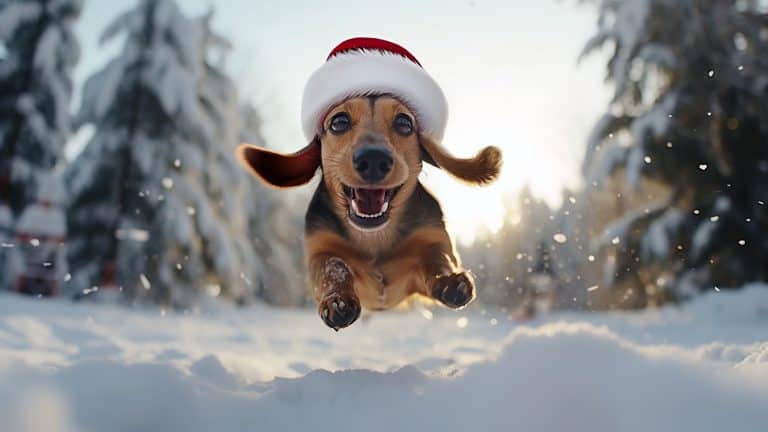Anywhere there’s snow, you can snowshoe. Your hound, however, won’t float atop fresh powder like you do. He risks post-holing, floundering in tree wells or even breaking through a snow bridge and falling into an icy stream if you don’t have enough backcountry experience to recognize the hazards. Packed snow, level terrain and designated trails are the best bet for entry-level canines and their uprights.
Among popular venues for dog-friendly snowshoe excursions in the Tahoe area are Blackwood Canyon Road, Echo Lakes, Meeks Creeks, Page Meadows, Fallen Leaf Lake Trail, Hope Valley, North Tahoe Regional Park, Big Meadow and Tahoe Meadows. Several developed cross-country ski areas, including Kirkwood XC & Snowshoe Center and Tahoe Cross Country, welcome canine-accompanied snowshoers on designated trails.
Wherever you go, you’re likely to share the terrain with cross-country skiers and/or snowmobiles, so be sure to observe proper etiquette. Stay out of and away from cross-country ski tracks whenever possible, and keep your dog away from them, too. Trampling ski tracks makes it difficult for skiers to kick and glide, and dangerous conditions can result when tracks freeze over and fill with icy clumps. Snowshoeing or walking dogs in ski tracks also creates growling between user groups, which is never a good thing.
As for snow machines: They go fast, and an unleashed dog can find herself inadvertently in their path. Use a leash tied to your waist if snowshoeing in snowmobile country. An even better hands-free leash solution which is skijoring equipment, includes a hip belt that attaches via a heavy-duty bungee cord to your dog’s collar or harness.
Word to the wise: You don’t have to invest in snowshoes if you’re new to the activity. They’re available for rent from outdoor retailers and most ski shops.

